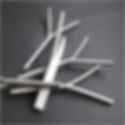
The Essential Guide to Y Anchors: Strengthening Refractory Installations
In the world of high-temperature industrial applications, refractory linings play a vital role in ensuring operational efficiency and longevity of equipment. A key component that ensures the structural integrity of these linings is the refractory anchor and among the various types, Y anchors stand out for their superior performance and versatility.

What Are Y Anchors?
Y anchors are specialized refractory anchors designed in the shape of the letter "Y" to provide optimal support and stability for refractory linings. These anchors are made from high-grade materials such as stainless steel, Inconel, or other heat-resistant alloys, ensuring their durability in extreme conditions. Their design ensures even load distribution and prevents premature failure of refractory linings.
Why Are Y Anchors Important?
Y anchors serve a critical purpose in refractory installations by:
Enhancing Structural Integrity: They secure the refractory lining to the furnace, kiln, or other high-temperature equipment, ensuring that the lining remains in place even under thermal and mechanical stress.
Preventing Spalling: By holding the refractory material firmly, Y anchors minimize the risk of cracking and spalling, which can compromise the lining's performance.
Supporting Thermal Expansion: Their unique design accommodates the thermal expansion and contraction of refractory materials, reducing stress on the lining.
Applications of Y Anchors
Y anchors are widely used across various industries, including:
Petrochemical Plants: For securing refractory linings in reactors, reformers, and furnaces.
Steel Plants: Used in blast furnaces, ladles, and tundishes to maintain heat-resistant linings.
Cement Kilns: Ensuring durability in high-temperature rotary kilns.
Power Plants: Providing stability in boilers and incinerators.
Material Options for Y Anchors
Depending on the specific requirements of an application, Y anchors can be manufactured using materials such as:
Stainless Steel: Suitable for moderate temperatures and corrosive environments.
Inconel: Ideal for high-temperature and highly corrosive conditions.
Carbon Steel: A cost-effective option for lower-temperature applications.
Choosing the Right Y Anchor
Selecting the right Y anchor involves considering factors such as:
Operating Temperature: Ensure the material can withstand the maximum temperature of the application.
Chemical Environment: Choose a material that resists corrosion in the specific operating conditions.
Refractory Thickness: The anchor size and design must match the thickness of the refractory lining.
Anchor Spacing: Proper spacing ensures even distribution of load and reduces the risk of failure.
Installation Best Practices
To maximize the effectiveness of Y anchors, it’s essential to follow these best practices:
Proper Spacing: Ensure even spacing to distribute stress uniformly.
Use of Welded Studs: For additional strength, Y anchors can be welded to studs attached to the equipment wall.
Anchor Coating: In some cases, ceramic coatings can be applied to anchors to reduce heat transfer and improve performance.
Conclusion
Y anchors are an indispensable component in refractory installations, providing the strength and stability needed to withstand extreme conditions. By selecting the right materials, adhering to best practices, and understanding their applications, industries can significantly enhance the durability and efficiency of their high-temperature equipment.
Whether you are working on a petrochemical furnace, a cement kiln, or a power plant boiler, Y anchors can be the key to achieving long-lasting and reliable refractory linings. Choose the right Y anchors for your needs, and ensure your operations run smoothly and efficiently.
Contact us today to learn more about our products, or visit our website to explore our wide range of refractory anchor solutions. Together, let’s build a stronger, safer, and more sustainable industrial future.
Frequently Asked Questions:
What sizes of Y anchors are available?
Y anchors come in a variety of sizes to match different refractory thicknesses and application requirements. Common sizes range from 3 mm to 10 mm in diameter, with varying lengths
Can Y anchors be used in corrosive environments?
How are Y anchors installed?
What factors should I consider when selecting Y anchors?
Are custom designs available for Y anchors?
.png)